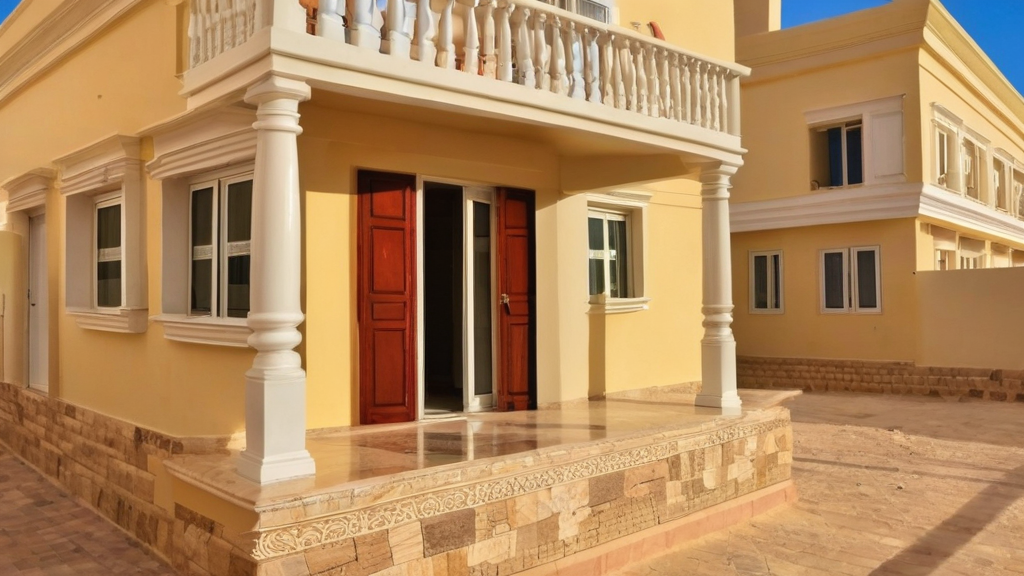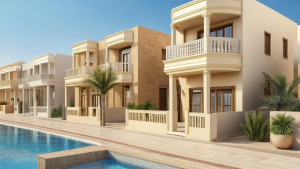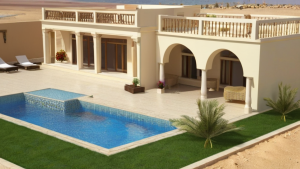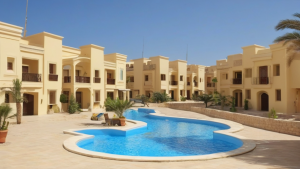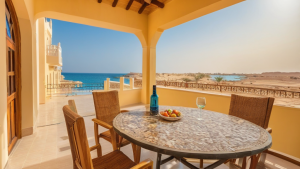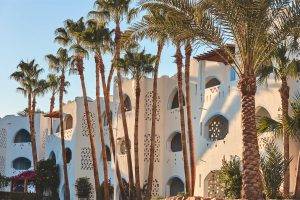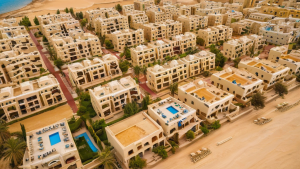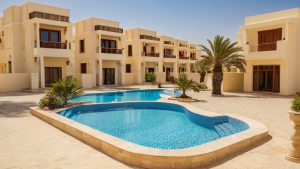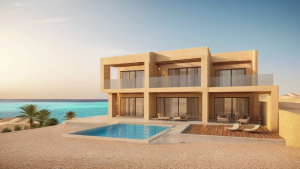Summary about owning and buying property in Hurghada, Egypt.
- Hurghada is Not Just a Tourist Spot , It’s a Strategy for Regional GrowthHurghada’s Role Beyond Tourism.
- It is a critical piece in Egypt’s broader strategy for regional growth and economic diversification.
- The strategic focus here is to use tourism as a foundation upon which a more resilient and inclusive economic landscape is built, benefiting both Hurghada and the surrounding region.
- Investments in transportation, such as the modernization of Hurghada International Airport and improved road networks, link the city more efficiently to major cities and neighboring countries.
- Foreign direct investment plays a crucial role, with international businesses encouraged to invest in sectors like renewable energy, water desalination, and health services in addition to tourism.
Hurghada is not just a tourist spot , it’s a strategy for regional growth
Hurghada’s role beyond tourism
Hurghada has long been known as a sun-soaked retreat along Egypt’s Red Sea coast, boasting stunning coral reefs, vibrant marine life, and pristine beaches that attract millions each year. However, focusing solely on its appeal as a tourist spot overlooks a much larger, intentional vision. Hurghada is not just a destination for leisure; it is a critical piece in Egypt’s broader strategy for regional growth and economic diversification.
Governments and investors alike see Hurghada as a dynamic hub with potential thriving far beyond beach vacations. Its development contributes to multiple sectors, creating a ripple effect that enhances infrastructure, generates employment, and nurtures local communities. The strategic focus here is to use tourism as a foundation upon which a more resilient and inclusive economic landscape is built, benefiting both Hurghada and the surrounding region.
Strategic economic diversification and infrastructure development
While tourism remains the primary driver, Hurghada’s growth strategy involves expanding infrastructure and diversifying economic activities. Investments in transportation, such as the modernization of Hurghada International Airport and improved road networks, link the city more efficiently to major cities and neighboring countries. This connectivity is essential for both tourists and commercial activities, helping Hurghada transform into a regional gateway.
Enhanced infrastructure encourages the development of logistics and trade, allowing Hurghada to attract businesses beyond traditional tourism services. Ports and maritime facilities are evolving to support commercial shipping and fishing industries, broadening the city’s economic base. This diversification strengthens resilience against the seasonal nature of tourism and global fluctuations in travel trends.
Driving employment and skill development
Employment opportunities generated through this strategic development stretch beyond hospitality jobs. Local communities benefit from new roles in construction, retail, transportation, and environmental management. Hurghada’s growth policy includes targeted skill development programs to empower its residents, allowing them to participate actively in and benefit from the city’s expansion.
Vocational training centers and partnerships with international organizations focus on building capacity in advanced hospitality management, marine conservation, and sustainable tourism. These efforts ensure that economic growth is inclusive and that the local population gains long-term career prospects rather than short-lived seasonal employment.
Sustainable tourism as a pillar of growth
Hurghada’s planners strongly prioritize sustainability to ensure that the environment,its greatest attraction,is preserved while promoting growth. This strategic balance helps the city avoid the pitfalls faced by many tourist hubs that suffer environmental degradation due to unchecked development and mass tourism.
Projects include eco-friendly resorts, coral reef restoration initiatives, and waste management programs that reduce pollution and protect marine ecosystems. Sustainable tourism policies are not only a responsible approach but also serve as a unique selling point attracting eco-conscious travelers.
Enhancing regional cooperation and investment
Hurghada’s development is part of a broader regional initiative, facilitating cooperation between neighboring areas along the Red Sea. Collaborative efforts focus on shared economic zones, tourism circuits, and cultural exchanges that create a network of mutually beneficial growth.
Foreign direct investment plays a crucial role, with international businesses encouraged to invest in sectors like renewable energy, water desalination, and health services in addition to tourism. This influx of capital stimulates innovation and infrastructure improvements, reinforcing Hurghada’s place as a strategic economic hub.
Benefits to communities and quality of life
Strategic growth in Hurghada aims to improve living standards for residents, not just attract visitors. Upgraded healthcare facilities, educational institutions, and public services accompany economic expansion to ensure that rising prosperity is felt by all.
Community engagement is vital in planning efforts, ensuring that tourism development respects local customs and traditions. Social investments target youth empowerment, enhancing prospects and providing alternatives to migration for work.
Key elements of Hurghada’s growth strategy
- Infrastructure Improvements: Enhanced transport links, modernized airport, upgraded port facilities.
- Economic Diversification: Expansion into logistics, fisheries, renewable energy, and healthcare.
- Employment and Education: Vocational training and skill-building programs for local workforce inclusion.
- Sustainable Development: Environmental protection initiatives and eco-tourism promotion.
- Regional Cooperation: Partnerships with neighboring cities to create a robust economic corridor.
- Community Focus: Investment in social services and increased community participation in planning.
In essence, Hurghada represents a strategic model where tourism acts as the springboard for comprehensive regional growth. The city’s development is a carefully crafted plan that balances economic needs, environmental stewardship, and social upliftment. For travelers, it remains a beautiful destination; for policy makers and investors, it serves as a blueprint for sustainable, inclusive progress.
How Hurghada’s development model balances tourism with sustainable resources
Hurghada, a vibrant city along Egypt’s Red Sea coast, is often celebrated for its stunning beaches and thriving tourism industry. However, the city’s approach to development extends far beyond simply attracting visitors. It embodies a strategic balance between expanding tourism and preserving the natural resources essential to its long-term success and community wellbeing. This dual focus makes Hurghada not just a tourist destination but a model in sustainable urban growth.
Strategic integration of tourism and environmental stewardship
Tourism in Hurghada has grown exponentially over the last few decades, transforming the city into one of Egypt’s leading tourist hubs. Yet, this growth was carefully planned to minimize environmental degradation. The city’s leaders and developers have implemented policies that ensure tourism activities coexist harmoniously with the fragile marine and desert ecosystems.
The Red Sea’s coral reefs, which attract many divers and snorkelers, are particularly vulnerable. Local authorities and businesses have adopted responsible practices such as limiting the number of tourists at sensitive sites, enforcing no-anchor zones to protect reefs, and promoting eco-friendly water sports. These measures help sustain the ecosystem, which is essential not only for protecting biodiversity but also for maintaining the quality of visitor experiences that fuel the local economy.
Efficient resource management to support sustainable growth
Beyond environmental concerns, Hurghada’s development strategy includes careful management of scarce resources like water and energy. The city is located in a desert region where water scarcity is a significant challenge. In response, Hurghada employs advanced water conservation technologies, including desalination plants that provide fresh water without over-extracting groundwater. Additionally, irrigation methods have been adapted to reduce water wastage, especially in landscaping areas around resorts and public spaces.
Energy-wise, there’s a visible push towards integrating renewable sources. Solar power initiatives have been introduced to reduce the reliance on fossil fuels and cut down greenhouse gas emissions. These efforts not only lower operational costs but also resonate well with the growing demographic of eco-conscious travelers who prefer destinations committed to sustainability.
Community involvement and economic empowerment
Another key aspect of Hurghada’s development model is empowering the local community. Without the involvement of residents, sustainable progress would be difficult to achieve. The city’s policymakers encourage local participation in tourism-related businesses,such as guided tours, handicraft markets, and local cuisine ventures,which distributes economic benefits more evenly.
Moreover, training programs and educational initiatives are designed to equip locals with the skills needed to participate in and manage sustainable tourism operations. This focus on human capital development ensures that the community can thrive alongside the rapidly growing tourism industry.
Infrastructure planning tailored for longevity
Infrastructure development in Hurghada is meticulously planned to support both the immediate needs of visitors and the long-term sustainability of the city. Urban expansion projects aim to reduce overcrowding and environmental strain by creating thoughtfully designed residential and commercial zones.
Public transportation improvements and pedestrian-friendly areas not only enhance the visitor experience but also reduce the carbon footprint associated with vehicle traffic. Waste management systems have been upgraded to better handle the increased volume generated by tourists and residents alike, emphasizing recycling and minimal landfill use.
Preserving natural beauty while enhancing tourist experience
The balance Hurghada achieves between maintaining its natural resources and enhancing tourism is a live example of how cities can grow responsibly. By preserving pristine beaches, protecting coral reefs, and maintaining clear desert landscapes, Hurghada offers a unique environment where tourists feel connected to nature rather than detached from it.
Tourists visiting Hurghada today are not just participants in leisure activities,they witness a city that respects its environment and strives to protect it for future generations. This conscious development approach enriches the visitor experience, making Hurghada a destination that will remain attractive and viable for decades.
Key elements in Hurghada’s sustainable development strategy
- Environmental conservation: Protecting coral reefs and marine life through regulated tourist access and eco-friendly practices.
- Water resource management: Utilizing desalination and efficient irrigation to address scarcity in a desert climate.
- Renewable energy initiatives: Embracing solar power to reduce carbon emissions and enhance energy efficiency.
- Community engagement: Involving locals in tourism businesses and offering education to support sustainable economic growth.
- Infrastructure planning: Designing urban spaces and transportation systems that reduce environmental impact.
- Waste management improvements: Implementing recycling programs to minimize landfill use.
Hurghada’s development model showcases how a city can thrive as a leading tourist destination while prioritizing sustainable use of its natural and human resources. This strategy not only benefits the environment but also strengthens the social fabric and economic resilience of the community. For travelers and investors alike, Hurghada represents more than a coastal retreat,it is a forward-thinking approach to responsible tourism and urban development.
Hurghada stands as a powerful example of how a city can be more than just a popular destination; it’s a carefully planned strategy that drives regional growth. By integrating tourism into a broader vision, Hurghada creates opportunities for local communities, boosts the economy, and attracts investment. This approach shows that tourism, when managed wisely, can serve as a foundation for long-term development rather than a short-term gain.
Moreover, Hurghada’s development model highlights the importance of balancing tourism with sustainability. The city prioritizes protecting its natural resources, like the Red Sea and surrounding desert, which are crucial to its appeal. This careful management ensures that both visitors and residents benefit, preserving the environment while supporting economic success. As a result, Hurghada offers a blueprint for other regions looking to grow responsibly without sacrificing their natural and cultural heritage.
For you, whether planning a visit or studying economic development, understanding Hurghada’s dual focus on strategic growth and sustainability offers valuable insights. It reminds us that the future of tourism must align with the well-being of communities and ecosystems. Hurghada’s example proves that thoughtful planning can turn a tourist spot into a powerful engine for positive change.

